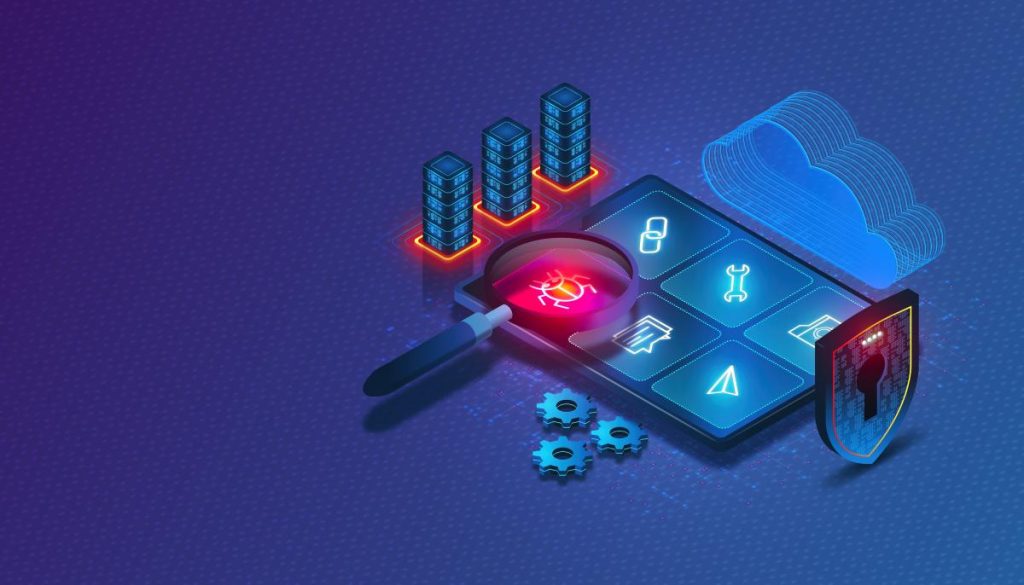When was the last time you put down your phone? People don’t just rely on their smartphones but grow emotionally attached to them. There is even a term for it, nomophobia, defined by the Cambridge Dictionary as the fear or worry at the idea of being without your cell phone or unable to use it. Our lives suddenly narrowed into a screen size that fits comfortably within our palm.
Businesses are no exception. Everything has been digitalized, from paperwork to processes. They have been storing almost everything online, from customer records, employee information, intellectual property, and trade secrets to other superior confidential data such as payment details, financial records, system credentials, etc. The battle to keep businesses tucked away safely from this dreadful digital age rages on, with cybersecurity standing as the top challenge has been highly bizarre. Every year, companies lose millions of dollars due to data breaches, 99% of which are initially caused by misconfigurations and already known vulnerabilities but decided to skip. Outright surreal, isn’t it?
Based on the ITRC’s (Identity Theft Resource Center) report, the number of data compromises in 2022 (1,802) was only 60 events short of the previous all-time high set in 2021 (1,862 compromises). An indicator that cybersecurity has always been and always will remain the biggest challenge for IT businesses for the next decade or so.
In the face of a multitude of operating system, network, and application-related vulnerabilities, enterprises are coming to terms with the need for comprehensive security risk assessment and management. To protect businesses effectively, adopting an efficient approach that leverages the best vulnerability scanning tools is the only step up for enterprises in solely fighting against cyber threats.
What are Vulnerability Scanning Tools?
As we have discussed vulnerability scanning in a previous blog, Vulnerability Scanning Tools is a designed automated tool that carries out the act of vulnerability scanning for you, pretty much like your private detective, who is fully equipped with a variety of techniques, to quickly spot potential weaknesses, checking for known software vulnerabilities, scanning for misconfigured systems, and even testing for weak encryption in your computer systems, networks, and applications.
Aside from those, these scanners also aim to take inventories of your assets, such as servers, endpoints, laptops, printers, containers, and virtual machines; aid in monitoring the system infrastructure, managing risks, and letting you know inside out what you need to protect.
How do Vulnerability Scanning Tools Work?
Vulnerability Scanning Tools are sophisticated software tools that work at the forefront of the cybersecurity battlefield. This scanning process is usually broken down as below:
Discovery: The initial step in the vulnerability assessment process involves the scanner identifying the assets on the network and conducting a port scan to determine the services or protocols in use on each port. Simply have an overview of the system, if you may.
Vulnerability analysis: The vulnerability analysis stage involves running a set of tests on each system or application to detect potential vulnerabilities based on the data collected from the previous step. The scanner then assesses all the gathered information, prioritizing vulnerabilities and producing a report outlining the identified vulnerabilities.
Remediation: The ultimate goal of this step is to utilize the report to help inform insights and decision-making. Typically, a cross-functional team of information security, development, and other departments collaborates to identify and prioritize the most effective solutions to address the identified issues discovered in the vulnerability analysis stage.
Thanks to vulnerability scanners, vulnerability assessment processes are now automated and made possible, saving both time and resources that would be costly otherwise, speedily touch on the harmful and unstable risks, and immediate hand-ons to mitigate them.
Which is your best shot at Vulnerability Scanning Tools?
To keep up with the current pace of the tech development industry, Vulnerability Scanning Tools have become a staple for security professionals to cope with strict project timelines and wild product release schedules.
With the diversification of vulnerability scanning tools on the market, finding The One that would work with your business is tricky. We recommend you do your research carefully and ask others who have experience with these tools to know what to expect and what not. Be considerate that a certain vulnerability scanning tool would work for them might not work for you because each organization and business has different testing approaches and techniques as well as work cultures.
To narrow down the A-lister of vulnerability scanning tools, we generally would have to take the following factors into contemplation; please take it lightly as our prioritize might be different from time to time depending on the goals and objectives of our project as well as our customers’ requirement at times:
Quality Oriented and Update Frequencies:
A lesson learned from Microsoft when Microsoft Office was the number one document and spreadsheet processor out there. The customers were happy with one update a year and even OK with the trouble of freshly installing a new version of Microsoft Office on their computers. Technically, you’ll have multiple versions of your Microsoft Office on your desktop. It wasn’t a problem then! It was not until Google Suites went around with no installation, constant updates, and its collaborative feature with others that Microsoft gradually lost its market shares, especially to the younger generation with over 2 billion users active monthly.
Therefore, it’s essential to consider factors such as the frequency of updates released by the vendor and the accuracy of vulnerability detection. It is best to stick with a recent, well-known vulnerability and examine the time gap between its announcement and the vendor’s release of a signature for it.
Compliance:
Can the vendor meet compliance requirements? Depending on the industry, many companies adhere to specific standards and rely on tools suitable for meeting requirements, such as ISTQB.
Active and Passive Detection:
Does the product integrate active system scanning and passive vulnerability detection through network traffic monitoring? This capability indicates how well the tools’ perform in various network environments, as certain networks like Industrial Control Systems (ICS) pose challenges due to their unique equipment requirements.
Cloud Services Support:
Is the product capable of identifying configuration issues within the environments of Infrastructure as a Service (IaaS), Platform as a Service (PaaS), or Software as a Service (SaaS) tools that you utilize? If your software/products mainly operate on the cloud, this is the major selling point for you apart from quality itself.
Prioritization:
What information factors into the product’s prioritization algorithm? Does it include a mix of automated prioritization and manual configuration that allows you to meet your goals efficiently?
Authenticated and Unauthenticated Scanning:
Does the product offer the option to deploy an agent on your systems for authenticated scans, reducing false positive rates? Additionally, is there support for agents on the major platforms in your environment?
Remediation Guidance:
What kind of remediation guidance does the product offer for identified vulnerabilities? When reviewing the product’s reports, is the information provided sufficient for you to take the necessary steps to remediate the vulnerabilities, or will you need to conduct further research?
Our pick: VAddy – The automated web vulnerability scanner for DevOps
VAddy integrates with your standard deployment process as an automated web vulnerability scanner. With its strong compatibility with CI tools and multi-language support, VAddy allows developers to effortlessly manage and function without any diving too deep into learning the expertise of the security field, proactively pinpointing unusual vulnerabilities, and preventing potential issues from jeopardizing your code.
VAddy’s visualization tool allows you to track the occurrence of security vulnerabilities attributed to team members or code modules, enabling faster identification of problem areas and network security enhancement, eliminating the need for last-minute vulnerability scans throughout the product development cycle with customized reports and dashboards for advanced management. A great tool developed and constantly updated by Japanese developers who are dedicated to hand-craft the best vulnerability scanning tool possible for even the non-software-testers can enjoy offers valuable insights on your web applications’ current security scenario, stay ahead and prevent last-minute risks, threats, and bad codes, such a bargain to be honest.
Conclusion
Being dependent on Vulnerability Scanning Tools is unavoidable in this digital era. There isn’t any shame in that, but rather a big breakthrough to equip ourselves to win this ongoing aggressive race against the competitors to gain competitive advantages and stay relevant to the customers.
Choosing an appropriate vulnerability scanning tool might be time-consuming and a headache. Still, it’s worth the effort to contribute to your product development quality and reduce time to market at a surprisingly affordable expense. That’s it for now! Be wise, be cautious, and be safe, folks!
ContactContact
Stay in touch with Us




